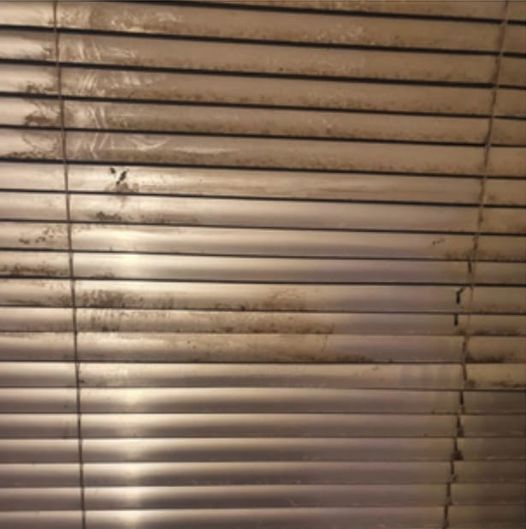Aluminum foil is an essential item found in nearly every kitchen. Its versatility and usefulness have made it a go-to material for cooking, food storage, and even creative household hacks. However, there’s one persistent question many people have: what is the difference between the shiny and dull sides of aluminum foil? Is one better than the other? Do they serve different purposes? Let’s dive into this long-standing mystery and discover the truth behind the shiny and dull sides of aluminum foil.
The Manufacturing Process
To understand the difference between the two sides, we need to look at how aluminum foil is made. The process begins with the extraction of bauxite, the primary ore used to produce aluminum. After the ore is mined, it goes through refining, where aluminum oxide is extracted and smelted to create pure aluminum metal. The metal is then rolled into thin sheets, creating the foil we use every day.
During the rolling process, the foil goes through several stages of thickness reduction. In the final stage, two sheets of foil are pressed together and then separated. This pressing process is crucial because it allows manufacturers to achieve the desired thinness while preventing the foil from tearing. The side that comes into contact with the rollers becomes shiny, while the side pressed against the other sheet remains dull.
Is There a Functional Difference?
One common belief is that the shiny side of aluminum foil reflects heat better, while the dull side absorbs it, making one side better suited for cooking or food storage than the other. However, this myth has been debunked. According to the Aluminum Association, there is no functional difference between the two sides in terms of cooking. The two sides are simply a result of the manufacturing process and do not affect the foil’s performance.
For most cooking tasks, such as baking or wrapping food, either side of the foil can be used interchangeably. The slight difference in heat reflectivity is negligible for common kitchen uses. So, if you’ve been wondering which side to use for cooking, you can rest assured that it doesn’t matter. Whether you choose the shiny side or the dull side, your food will cook just as well.
The Shiny Side Myth in Cooking
Despite the lack of a functional difference, many people continue to swear by using one side over the other. Some claim that using the shiny side helps retain more heat, making it ideal for covering dishes while baking. In contrast, others argue that using the dull side provides a better barrier against heat loss.
However, scientific studies have shown that the heat difference between the shiny and dull sides is so minimal that it has virtually no impact on cooking times or food quality. Whether you are covering a turkey for roasting or wrapping vegetables for the grill, both sides of the foil will perform equally well. The idea that one side is more effective than the other is largely based on personal preference and tradition.
Aluminum Foil Beyond the Kitchen
While aluminum foil is most commonly associated with cooking, it has many other practical uses beyond the kitchen. Its ability to withstand extreme temperatures and form a protective barrier makes it an ideal material for a variety of household tasks.
- Cleaning Silverware: If you have tarnished silverware, you can use aluminum foil and baking soda to restore its shine. Line a container with foil, place the silverware inside, add baking soda and boiling water, and watch the tarnish disappear.
- Sharpening Scissors: Foil can be used to sharpen dull scissors. Simply fold a piece of foil several times to create a thicker sheet, then cut through it with your scissors. This process helps to restore the sharpness of the blades.
- Ironing Clothes Faster: Placing a sheet of aluminum foil underneath your ironing board cover can speed up the ironing process. The foil reflects heat, allowing you to press both sides of the fabric at once.
- Protecting Pie Crusts: If your pie crusts tend to burn before the filling is done cooking, try using aluminum foil. Create a protective shield by folding the foil around the edges of the pie, preventing them from overbaking.
Health Concerns with Aluminum Foil
Although aluminum foil is incredibly useful, some health concerns have been raised about its use in cooking. Specifically, the concern is that aluminum can leach into food, especially when the foil is used to wrap acidic or salty foods, or when it is used at high temperatures.
According to the World Health Organization, adults can safely consume up to 50 mg of aluminum daily without adverse effects. However, research suggests that cooking with aluminum foil may lead to higher exposure, especially when using it with acidic foods like tomatoes or citrus. While the amount of aluminum that leaches into food is generally considered safe, those who are concerned about exposure may want to limit their use of aluminum foil or opt for alternative cooking materials such as parchment paper.
Conclusion: Shiny or Dull – It’s All the Same!
The shiny vs. dull debate surrounding aluminum foil has persisted for years, but the truth is, there’s no right or wrong side to use. Whether you choose the shiny or dull side, the performance of the foil remains unchanged. Its versatility in the kitchen and beyond makes it an invaluable tool for countless tasks. So, the next time you reach for a sheet of aluminum foil, use whichever side you prefer—because, in the end, it makes no difference!
Whether you’re using it for cooking, cleaning, or some creative household hack, aluminum foil continues to be one of the most versatile items in any home. Now that you know the truth about its shiny and dull sides, you can confidently use it for all your kitchen needs without worrying about which side is up!

